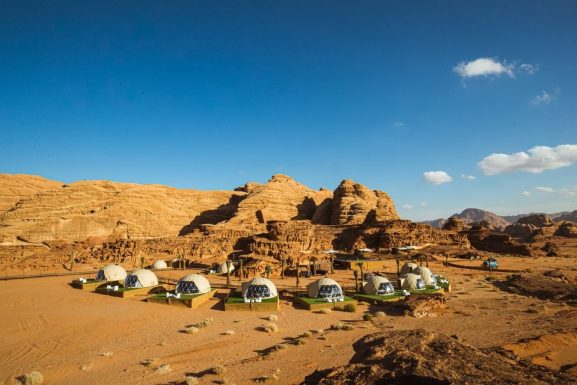What is the climate in Jordan?
Jordan Climate Guide 2025: What’s the Weather Like in Jordan?
Jordan, a gem in the heart of the Middle East, offers a diverse climate that shapes its landscapes and influences the best times to visit its iconic attractions. From the ancient ruins of Petra to the salty shores of the Dead Sea, understanding Jordan’s weather can make or break your travel experience. In this comprehensive guide, we’ll explore Jordan’s climate by season, break down regional differences, and share expert travel tips to help you plan the perfect trip in 2025.
Overview of Jordan’s Climate
Jordan experiences a Mediterranean climate with distinct seasons: hot, dry summers and cool, wet winters. However, the country’s varied geography—from the fertile Jordan Valley to the arid deserts of Wadi Rum—creates significant regional differences. Average temperatures range from 30°C (86°F) in summer to 13°C (55°F) in winter, but extremes can occur, especially in the desert regions. Rainfall is concentrated in the winter months, primarily in the north and west, while the eastern deserts see little to no precipitation year-round.
Jordan’s Climate by Season
Spring in Jordan (March to May)
Spring is one of the best times to visit Jordan, with mild temperatures and blooming landscapes. In Amman, daytime temperatures average 20-25°C (68-77°F), while the Jordan Valley and Aqaba are warmer, reaching 28-32°C (82-90°F). Rainfall decreases as the season progresses, but early spring might see occasional showers. The desert regions, like Wadi Rum, are pleasant for camping, with cooler nights around 10-15°C (50-59°F).
Travel Tip: Spring is ideal for exploring Petra and Jerash, as the weather is perfect for long walks through archaeological sites. Pack layers for cooler mornings and evenings.
Summer in Jordan (June to August)
Summers in Jordan are hot and dry, especially in the desert and low-lying areas. Amman sees average highs of 32°C (90°F), but temperatures in the Jordan Valley, Dead Sea, and Aqaba can soar to 40°C (104°F) or higher. The eastern deserts experience extreme heat, often exceeding 45°C (113°F). Nights in the desert cool down significantly, dropping to 20°C (68°F), making stargazing in Wadi Rum a magical experience.
Travel Tip: If visiting in summer, focus on early morning or late afternoon activities. The Dead Sea and Aqaba are great for water-based adventures, but stay hydrated and avoid midday sun exposure. .
Autumn in Jordan (September to November)
Autumn brings a welcome relief from the summer heat, with temperatures gradually cooling. Amman averages 25-28°C (77-82°F) in September, dropping to 18-22°C (64-72°F) by November. The Jordan Valley remains warmer, while the highlands might see early rainfall. This season is perfect for hiking in the Dana Biosphere Reserve or exploring the Roman ruins of Jerash.
Travel Tip: Autumn is a shoulder season, offering fewer crowds and pleasant weather. It’s a great time to visit Petra or take a hot air balloon ride over Wadi Rum. .
Winter in Jordan (December to February)
Winters in Jordan are cool and wet, especially in the north and west. Amman averages 10-13°C (50-55°F) during the day, with occasional drops to 5°C (41°F) at night. Snow is rare but possible in the highlands—Amman and Petra have seen light snowfall in recent years. The Jordan Valley and Aqaba remain milder, with highs of 15-20°C (59-68°F). Rainfall is heaviest in January, mostly in the north, while the eastern deserts stay dry.
Travel Tip: Winter is a quieter time to visit, perfect for cultural experiences in Amman or a relaxing dip in the Dead Sea’s warm waters. Pack a rain jacket and warm layers for the highlands. .
Regional Climate Variations in Jordan
Jordan’s geography creates stark climate differences across the country:
- Amman and the Highlands: Cooler and wetter, with more pronounced seasons. Winter rainfall supports agriculture, while summers are dry and sunny.
- Jordan Valley and Dead Sea: Hotter and more humid, with temperatures rarely dropping below 15°C (59°F), even in winter. The Dead Sea, at the lowest point on Earth, is a year-round destination.
- Aqaba and the Red Sea: Subtropical and warm, with highs of 20°C (68°F) in winter and 40°C (104°F) in summer. It’s ideal for beachgoers and divers.
- Eastern Deserts (Wadi Rum): Extreme temperatures, from scorching summer days to chilly winter nights. Rainfall is scarce, making it a true desert climate.
Visual Suggestion: Include a climate map of Jordan highlighting these regions, with average temperature and rainfall data for each.
Best Time to Visit Jordan Based on Weather
The best time to visit Jordan depends on your preferences:
- For Mild Weather: Spring (March to May) and autumn (September to November) offer the most comfortable temperatures for sightseeing.
- For Beach and Diving: Summer (June to August) is perfect for Aqaba and the Red Sea, though inland areas will be very hot.
- For Fewer Crowds: Winter (December to February) is quieter, with mild weather in the Jordan Valley and Aqaba, though the highlands can be chilly.
Visual Suggestion: Add a table or chart showing monthly temperature and rainfall averages for Amman, Petra, and Aqaba to help travelers plan.
How Jordan’s Climate Impacts Popular Attractions
- Petra: Spring and autumn are ideal for exploring Petra’s vast archaeological site, as summer heat can be exhausting, and winter might bring rain or rare snow.
- Wadi Rum: The desert’s extreme temperatures make spring and autumn best for camping and jeep tours. Summer days are scorching, but nights are cool for stargazing.
- Dead Sea: A year-round destination, though summer can be unbearably hot. Winter offers a warm escape with therapeutic waters.
- Amman: Winter is great for cultural experiences like visiting the Citadel or souks, while spring and autumn are perfect for outdoor exploration.
Internal Link: .
What to Pack for Jordan’s Climate
- Spring/Autumn: Light layers, a jacket for cooler evenings, comfortable walking shoes, and sunscreen.
- Summer: Lightweight, breathable clothing, a hat, sunglasses, and plenty of sunscreen. Bring a swimsuit for Aqaba or the Dead Sea.
- Winter: Warm layers, a waterproof jacket, and sturdy shoes for potential rain. A scarf is handy for chilly desert nights.
Internal Link: .
Climate Change in Jordan: A Local Perspective
Jordan is increasingly feeling the effects of climate change, with rising temperatures and decreasing rainfall. A local tour guide in Amman shared, “We’ve noticed hotter summers and less predictable rain, which affects agriculture and water resources. Tourists should be prepared for more extreme weather, especially in the desert.” Historical data shows a temperature increase of about 1.5°C over the past 50 years, a trend that’s likely to continue.
External Link: For more on Jordan’s climate data, visit the .
Frequently Asked Questions About Jordan’s Climate
Q: Does it snow in Jordan?
A: Yes, but it’s rare. Light snow can fall in Amman and Petra during winter, usually in January or February.
Q: What’s the hottest month in Jordan?
A: July and August are the hottest, with temperatures in the Jordan Valley and Aqaba often exceeding 40°C (104°F).
Q: Is Jordan good for a winter vacation?
A: Absolutely! The Jordan Valley and Aqaba are mild in winter, making them great for a warm escape.



